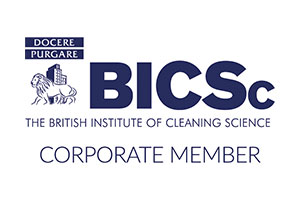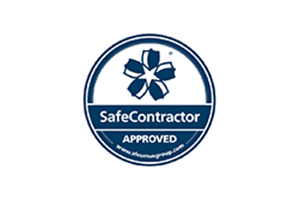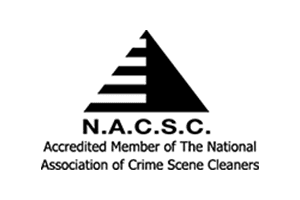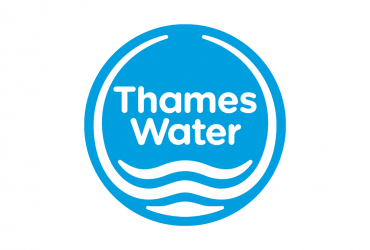How To Remove Mould From Silicone
- What causes mould?
- What are the effects of mould growth on silicone?
- How to remove mould from silicone sealant
- The different ways to prevent mould on silicone
- Get in touch
Dark, unsightly patches of mould can quickly ruin the appearance of the clean, white silicone sealant in your kitchen and bathroom, and around your windows. Unfortunately, this is not only one of the most common places for it to grow, it is also particularly challenging to remove from silicone.
Here at ICE Cleaning, our mould remediation services come with a lifetime guarantee*. Our Dewpoint-accredited technicians can eliminate all traces of the mould from your home, including mould in the air. They are available nationwide, day and night, 365 days a year.
Keep reading to find out how to get rid of mould growing on silicone.
*subject to advisories
What causes mould?
Mould is a type of fungus that grows in environments that contain excess moisture, warmth, and organic matter. It is usually caused by leaks, damp, flooding, high humidity, condensation, and poor ventilation.
It can often be found growing in the bathroom and kitchen due to the warm temperatures and steam produced when washing and cooking. Another common place you might find it is around windows because of the condensation that forms on them.
As silicone sealant is waterproof, it is often assumed that it is automatically mould-resistant. However, when sealant comes away from a surface, water can collect behind it, enabling mould to grow
Mould can also be caused by water collecting on top of the silicone, too many products being kept in the shower or bath, and the presence of organic waste materials like soap and kitchen waste.
One kind of mould that can grow on your silicone sealant is black mould, a group of moulds that are black or dark in colour. It often grows on surfaces that have been damp for a long time, so wet silicone sealant in a bathroom provides it with its ideal conditions for growth.
What are the effects of mould growth on silicone?
Not only is mould an ugly addition to your home, it can be dangerous, too. Mould releases allergens and irritants which can trigger an allergic reaction like coughing, sneezing, and skin rashes. Certain groups are especially vulnerable to mould growth including:
- Young children
- Elderly people
- People with pre-existing respiratory or skin conditions
- People with a weakened immune system
Should you find black mould on your silicone, you could be at risk of more serious health issues. Some types of black mould, like Stachybotrys chartarum, produce toxic chemicals which are linked to problems like sick building syndrome.
Mould can also damage the surfaces it grows on including wood, fabric, certain building materials, and silicone sealant. To protect people’s health and minimise damage to your home and possessions, a quick, effective response is critical as soon as you spot the first signs of mould growth.
How to remove mould from silicone sealant
There are lots of DIY mould removal methods recommended online for silicone like scrubbing the area with a baking soda and vinegar paste, or cleaning it with bleach. However, these methods may not eliminate all the mould and could put your health at risk.
Specialist equipment and products are required to get rid of all traces of the mould or it will quickly grow back. It is also very difficult to effectively remove mould on your silicone sealant as it grows behind it, an area which is hard to clean.
Some abrasive cleaning methods can damage the delicate silicone, too. It is often recommended that for a serious mould problem, you should replace the silicone. If you do, consider using anti-mould silicone sealant to prevent growth in the future.
The cleaning products suggested can be harmful, as well. Bleach, for example, is corrosive and should only used if you are wearing full personal protective equipment (PPE) and are working in a well-ventilated area.
Professional cleaners will have the PPE, specialist tools, and training to remove all the mould from your property. They can give you peace of mind that your home is safe and clean again.
The different ways to prevent mould on silicone
There are lots of things you can do to stop mould growing in your property, like keeping the humidity level below 50% all day, regularly opening windows, and ensuring adequate air circulation. But there are some specific things required to prevent growth on silicone sealant:
- Make sure you have an extractor fan installed in your bathroom and kitchen to remove humid air
- Open windows while showering and cooking to get rid of steam and lower the humidity level
- Wipe down shower walls after showering to remove excess moisture
- Don’t leave damp towels or bath mats in the bathroom
- Regularly clean the bathroom and kitchen to prevent the build up of dust, dirt, and dead insects which mould can feed off
Get in touch
Our nine stage mould remediation process can quickly restore your property to a mould-free environment. We can also diagnose the specific cause of mould in your property and advise on how to prevent it in the future.
Contact our team today on 0208 066 0360 or send an email to enquiries@icecleaning.co.uk book our technicians for our mould removal services.

Speak with me today,
I’m here to help
By asking you a few questions either via phone or email I can immediately provide a realistic estimation of the cost.
You’re in good company. We’ve cleaned for the following commercial clients… View all

Why choose us?
- Cater to a wide variety of cleaning situations
- Nationwide coverage, available 24/7
- Cater to commercial and domestic clients
- Free survey provided prior to quotation
- Emergency response team
- Offer a bespoke service designed to suit all your needs
- All technicians hold professional health and safety qualifications, including BICSc, IOSH, Dewpoint Professional & Safe Contractor
We’re fully accredited
We place best practise, professional expertise and health and safety at the core of our business. We’re fully compliant with all legal obligations. You can view a list of our accreditations below, or visit our Health & Safety page for more information.











-RGB-small.1707319151.jpg)




















